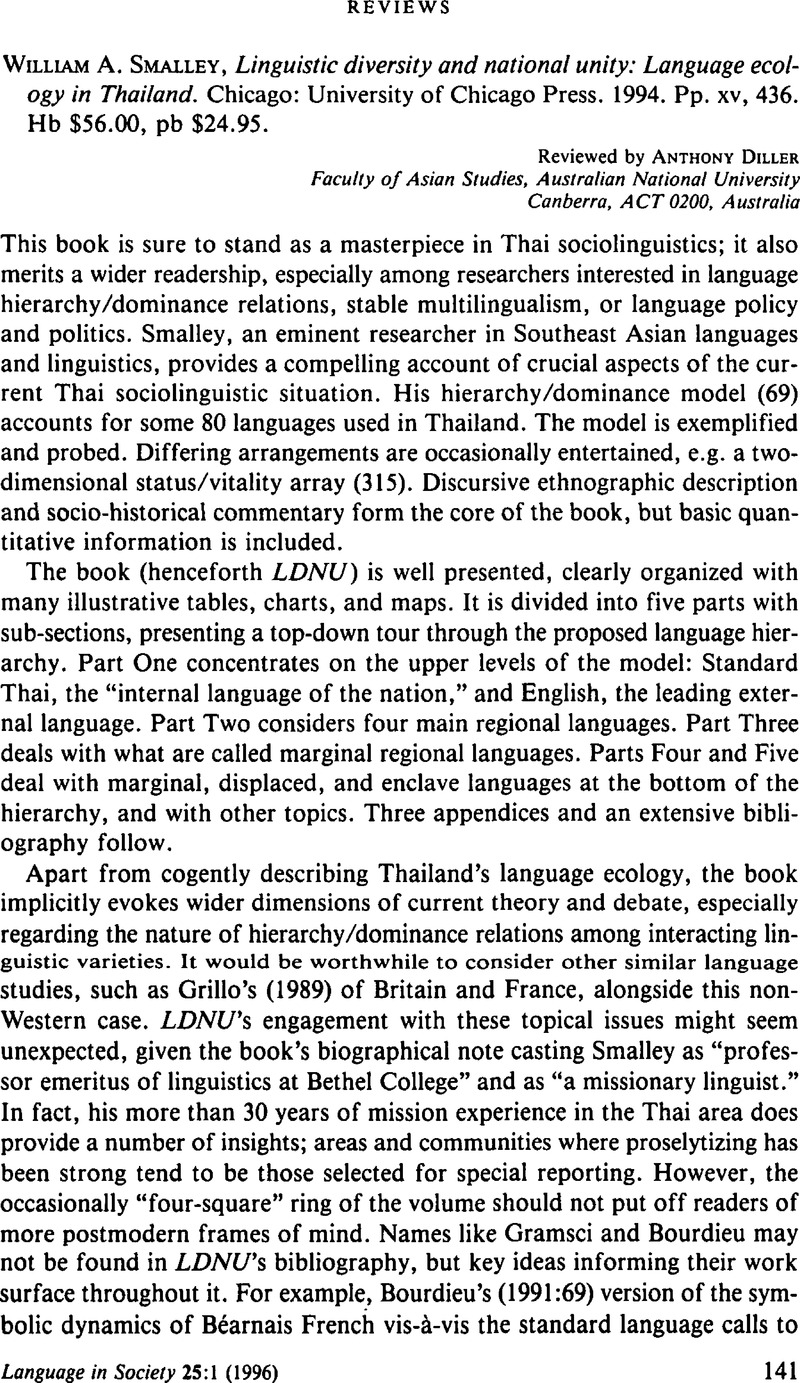No CrossRef data available.
Article contents
William A. Smalley, Linguistic diversity and national unity: Language ecology in Thailand. Chicago: University of Chicago Press. 1994. Pp. xv, 436. Hb $56.00, pb $24.95.
Published online by Cambridge University Press: 19 February 2009
Abstract
An abstract is not available for this content so a preview has been provided. Please use the Get access link above for information on how to access this content.

- Type
- Reviews
- Information
- Copyright
- Copyright © Cambridge University Press 1996
References
REFERENCES
Aeosriwongse, Nidhi (1984). Standard Thai and politics [Phasa thai matrathan lae kanmueang]. Phasa lae Nangsue 17:11–37.Google Scholar
Diller, Anthony (1991). What makes Central Thai a national language? In Reynolds, Craig J. (ed.), National identity and its defenders: Thailand 1939–1989 (Monash papers on Southeast Asia, 25), 86–132. Melbourne: Monash University Centre of Southeast Asian Studies. (Reprinted, 1993; Chiangmai, Thailand: Silkworm.)Google Scholar
Grillo, Ralph D. (1989). Dominant languages: Language and hierarchy in Britain and France. Cambridge & New York: Cambridge University Press.Google Scholar
Kamthorn, Roengsak (1992). Chuan Likphai, fishmonger's son [Chuan Likphai luk maekha khai phung pla]. Bangkok: Samnak Phim Bang Luang.Google Scholar
Keyes, Charles F. (1987). Thailand: Buddhist kingdom as modern nation-state. Boulder, CO: Westview.Google Scholar




